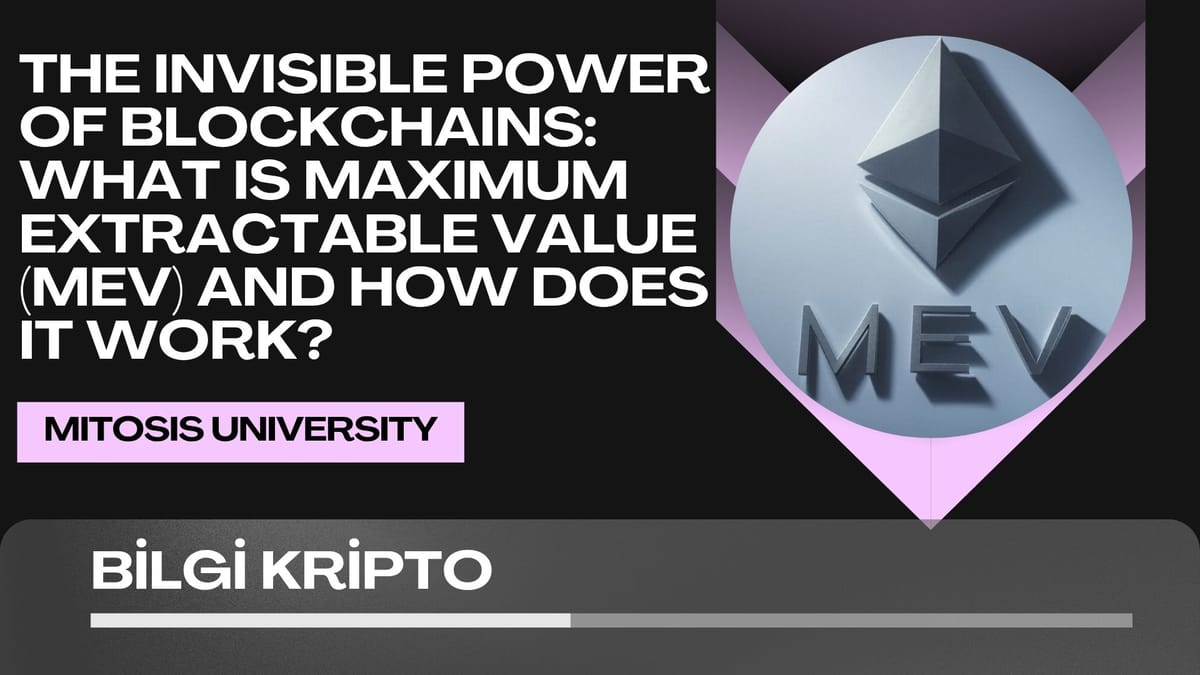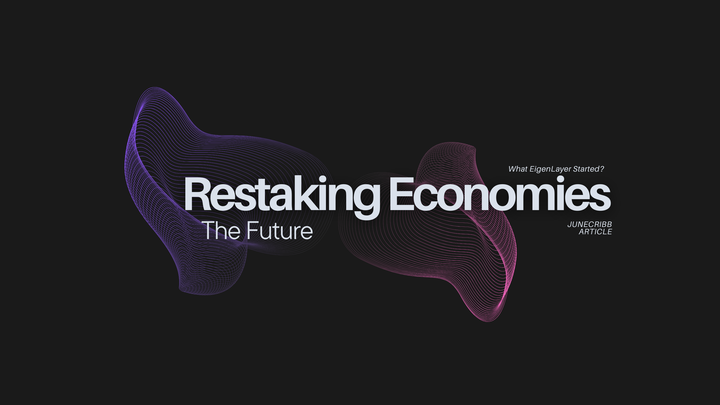The Invisible Power of Blockchains: What Is Maximum Extractable Value (MEV) and How Does It Work?

Blockchain technology is built upon core principles such as decentralization and transparency. However, within this structure lies an inherent and often overlooked phenomenon: Maximum Extractable Value (MEV).
This concept operates deep within blockchains, sometimes negatively affecting user experience, while at other times increasing network efficiency through opportunities like arbitrage. In this article, we’ll break down what MEV is, how it works, and provide real-world examples to explain the concept step by step in a way that everyone can understand.
What Is MEV? A Simple Definition
MEV refers to the process of earning extra profit by deliberately reordering, excluding, or including transactions in a block before it is added to a blockchain. It was initially known as "Miner Extractable Value" because miners were the primary actors carrying it out. However, as major networks like Ethereum transitioned from mining to validation, the term expanded and was redefined using "Maximum" instead.

Why Does MEV Exist?
A block producer (miner or validator) has the freedom to order transactions before adding them to a block. Typically, this order is determined by the amount of gas fees paid — higher-fee transactions are prioritized. But the story doesn’t end there. The position of certain transactions can directly affect others, especially in decentralized finance (DeFi) applications.
Imagine a large token purchase is about to take place on a decentralized exchange (DEX). This purchase will raise the token’s price. If someone places their own buy order right before this big transaction, they can buy at a lower price and sell at a higher one, profiting from the price movement. This manipulation of transaction order is known as MEV.
How Does MEV Work?
To understand how MEV works, it’s important to know the three main actors in the blockchain:
- Block producers (miners/validators): They create blocks and include transactions.
- Users: Individuals who initiate transactions via their wallets.
- Searchers: Algorithmic actors that detect MEV opportunities using custom bots and aim to profit from them.
Searchers analyze blockchain data to find MEV opportunities. To capitalize on them, they often offer high gas fees to block producers. If the producer includes the transaction, both parties benefit. However, the average user on the network is usually the one who loses.

Explaining MEV Through Real-Life Examples
Though MEV may seem abstract, it mirrors several well-known financial behaviors in the real world. Here are a few examples:
1. Arbitrage
If a token trades at different prices on two exchanges, a searcher can identify the discrepancy, buy from the cheaper exchange, and sell on the more expensive one. If their transaction is included in the block before others, they can secure a significant profit. MEV here is about prioritizing the order of transactions.
2. Front-Running
When a user places a large buy order, a searcher can detect this and insert their own transaction just before it. They buy, the price increases, then they sell. While this resembles insider trading in traditional finance, it’s based on publicly available on-chain data.
3. Liquidations
In DeFi protocols, users provide collateral when taking loans. If the collateral’s value drops, the system automatically liquidates the loan. The actor performing the liquidation receives a reward. Searchers compete to be the first to execute these transactions, making this another MEV scenario.
Is MEV Always a Bad Thing?
No. While MEV can expose flaws in system efficiency and fairness, it also offers benefits.
Pros:
- Arbitrage trades help quickly correct prices in DEXs.
- Liquidations reduce collateral risk in DeFi protocols.
- Gas fee competition incentivizes block producers.
Cons:
- Front-running and sandwich attacks worsen user experience.
- Heavy MEV activity can cause network congestion and high fees.
- In some cases, block producers might reorg the chain (rebuild older blocks) to create more profitable transaction sequences, threatening network integrity.
Where Are We Headed? Solutions Developed Against MEV
Several techniques have been developed to mitigate the negative effects of MEV:
- MEV-Boost: Separates block producers and searchers, offering fairer transaction ordering.
- Fair Sequencing Services (FSS): Uses decentralized structures to manage transaction order.
- Rollup-based solutions: Aim to reduce MEV’s impact by using off-chain transactions.
Conclusion: Understanding MEV Is Understanding Blockchain
MEV is an unavoidable and complex reality of the blockchain world. While it eliminates some inefficiencies within the system, it can also create unfair outcomes through manipulative transaction ordering. Thus, MEV should not be viewed merely as a technical concept, but rather as a dynamic part of blockchain economics.
As awareness of MEV grows, new solutions will emerge to support its beneficial aspects and minimize its drawbacks. For anyone who sees blockchain as more than just “digital money” — as a dynamic and complex market — MEV is a fundamental concept that must be understood


Comments ()